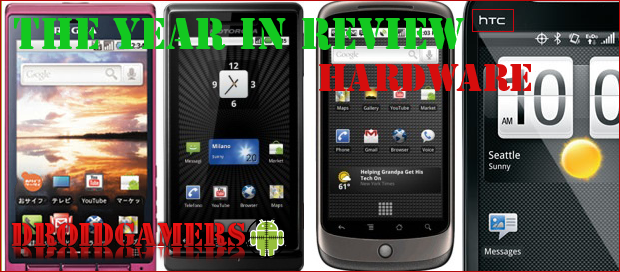[Updated] Manufacturers are jumping aboard the Android train next year at a pace unheard of for any industry, but what about the hardware that’s caused this cascade of announcements and innovation? We take a look at the hardware that’s inspired us and the future of Android, Smartphones and design for the foreseeable future.
2010 started off strong with the release of Google’s Nexus One, it’s first-party phone for the platform, it thought it would change the cellphone industry with the N1 and to some extent – it has. Today it remains the benchmark that other devices are compared against because of the stock Android UI and lack of third-party bloatware apps. Ultimately, Google’s idealistic plans for changing cellphone carriers and becoming a retailer didn’t work out for them, various reasons included poor customer service and a general lack of support from the carriers led to it’s failure. The top few national carriers continue to hold onto their control of the market and today Google cooperates on lobbying for legislation in the U.S. government with Verizon. The HTC built device turned out fantastic, even with multitouch sensitivity issues and poor capacitive button response.
Later in the year, designs from HTC, Motorola and Dell with the Streak gravitated toward larger and larger. Eventually we saw the Galaxy Tab from Samsung, a Froyo tablet that was essentially a gigantic display on an Android phone, it still lacks proper developer support. Recently design took a turn toward somewhat uncreative the more and more we saw them. Generic black slabs took over Android phone design in 2010 across North America, but Japanese designers like Toshiba may stir things up a bit. Their phones plan to bring interesting brushed metal finishes and choices of colors – the next step for Android customization in the future.
What we look forward to most is the future of Android, a new year brings new phones with (hopefully) innovative designs. Tegra 2 chipsets in phones and actual tablets will run operating systems designed for their form-factor. The screen real estate along with the increased power will change mobile gaming drastically, especially with the new APIs found in Gingerbread, and eventually Honeycomb.





